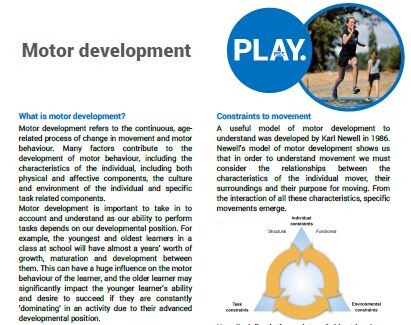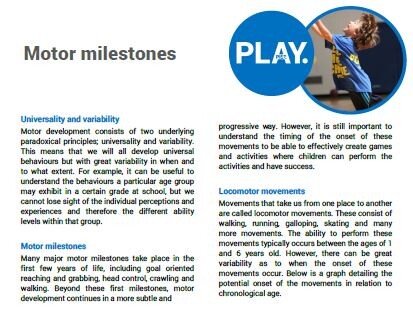Motor development is a key component of physical literacy. Beyond the physical competence mentioned in the physical literacy definition, motor development encompasses growth, maturation and regression from birth to death. The information on this page details important knowledge relating to motor development and understanding the field of knowledge, while also connecting theory to how we can use it within our daily physical activity programs and lessons.
Click on the button below each resource to download each information sheet. If you would like more information on anything contained within these documents, please feel free to contact us.

Motor development
Motor development refers to the continuous, age-related process of change in movement and motor behaviour. Many factors contribute to the development of motor behaviour, including the characteristics of the individual, including both physical and affective components, the culture and environment of the individual and specific task related components.

Motor milestones
Many major motor milestones take place in the first few years of life, including goal oriented reaching and grabbing, head control, crawling and walking. Beyond these first milestones, motor development continues in a more subtle and progressive way.

Adolescent awkwardness
As we continue to age and mature in to our teenage years, major changes occur within our body. These changes can have an impact on our ability to move and coordinate our limbs, causing what is known as ‘adolescent awkwardness’.

